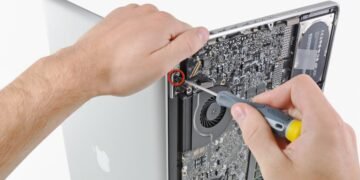When working on a do-it-yourself project, you need to have the right tools. This includes having the right blades for your portable power tools. The blade is one of the most important parts of a portable power tool. The right blade can make the tool work better and be safer.
There are a few things to keep in mind when a portable power tool ridgid table saw for sale. Different materials require different types of blades. For example, wood blades are different from metal blades. The size and shape of the blade will impact the speed and precision of the cut.
Finally, make sure that the blade is compatible with the power tool. Not all blades are compatible with all power tools. It is important to choose the right blade for your portable power tool. This will help you get the most use out of it.
There are a variety of blades that are available for portable powertools.
The kind of blade you need will depend on what you are cutting and what kind of portable power tool you are using. When choosing a blade for a portable power tool, there are a few things to think about. The first is the material you will be cutting. Different materials need different types of blades to cut well. Some materials like wood can be cut with a regular blade, but harder materials like concrete will need a stronger, more specialized blade. Another thing to think about is what kind of portable power tool you are using.
When you are choosing a blade for your power tool, it is important to make sure that it will work with your specific tool.
Circular Saw Blades:
Circular saw blades are one of the most important attachments for portable power tools, such as handheld circular saws and table saws. The saw blades come in different sizes and can be made from different materials, such as steel or tungsten carbide. The size of the blade will determine how deep of a cut it can make and how fast the blade will spin. For example, a small blade may only be able to make a shallow cut, but it will rotate very quickly.
A larger blade will be able to make a deeper cut, but it will rotate more slowly. The material the blade is made of also affects how well it works. Steel blades are very durable but can become dull quickly. Tungsten carbide blades stay sharp for longer but are more fragile and expensive. You need to choose the right type of blade for the job at hand to get the best results from a portable power tool.
Jigsaw Blades:
When it comes to cutting through tougher materials, jigsaw blades for portable power tools are the way to go. These blades can be used to cut different materials, like wood and metal. They can also be used for different tasks, like cutting curves or making straight cuts. Jigsaw blades come in different sizes and shapes. You need to choose the right blade for the task you are doing.
There are two types of blades: T-shank and U-shank. Most people use T-shank because it works with most jigsaws. U-shank is for Bosch and Milwaukee brand jigsaws. If you don’t know which type to get, look in the owner’s manual or ask someone who works at the store.
Reciprocating Saw Blades:
A reciprocating saw is a powerful tool that can be used for many different things, like cutting pipes and demolishing walls. It can also be used for more delicate work, like trimming tree branches. With so many different types of reciprocating saw blades on the market, it can be difficult to know which ones to use for which tasks.
One common type of reciprocating saw blade is the metal cutting blade. These blades help you to quickly and easily cut through metal. This is helpful when you need to cut pipes or weld metal together. Metal cutting blades are also good for quickly removing nails or screws from wood surfaces. Another popular type of reciprocating saw blade is the demolition blade. Demolition blades are helpful when you need to tear down walls or break through concrete. They are also good for quickly removing tree roots or large rocks.
The Importance of Using the Right Blade for Your Portable Powertool
When working on a do-it-yourself project, it is important to use the right blade for your portable power tool. Using the wrong blade can not only damage your power tool, but it can also be dangerous.
There are three main types of blades available for portable power tools: high-speed steel (HSS), tungsten carbide (TC), and diamond.
HSS blades are the most common type of blade. They can be used for wood and metal. TC blades are harder than HSS blades so they are better for cutting hard materials like ceramic tile or concrete. Diamond blades are the hardest type of blade and can cut stone, brick, and concrete.
When choosing a blade for your portable power tool, you need to consider the material you will be cutting. For example, if you will be cutting softwood, you would use an HSS blade. If you will be cutting hardwood, you would use a TC blade. And if you will be cutting stone, you would use a diamond blade.
Conclusion:
In conclusion, it is important to use the right blade for your portable power tool when working on a DIY project. Using the wrong blade can damage your power tool and/or be dangerous. Be sure to consider the material you will be cutting and the hardness of that material before choosing a blade.
When working on a DIY project, it is important to have the right tools for the job—including the right blade for your portable power tool. Additionally, many portable power tools come with a variety of safety features, making them safe to use even for beginner users. With all of these benefits try it out here, it’s no wonder that portable power tools are becoming increasingly popular. Whether you’re a DIYer or just looking for an easy way to get the job done, portable power tools are a great option.
Read more interesting articles at Urbanly Modern







































































